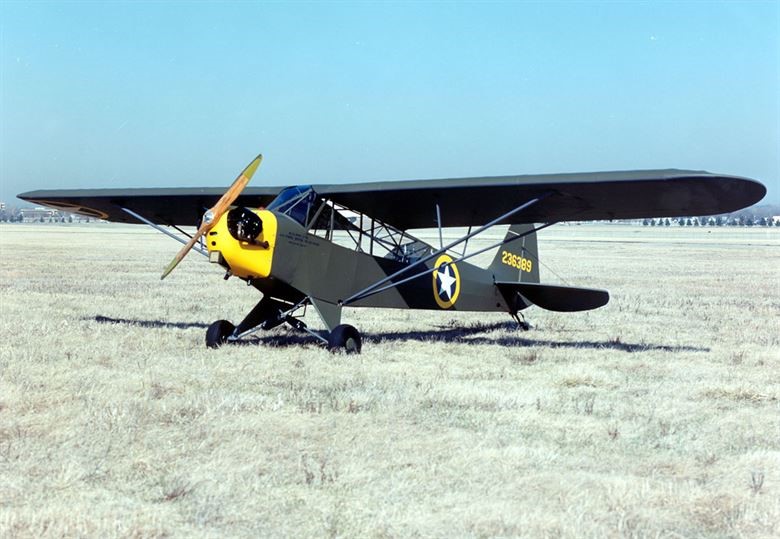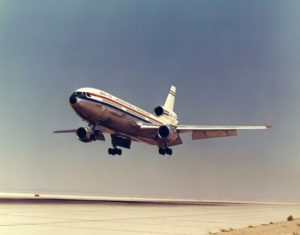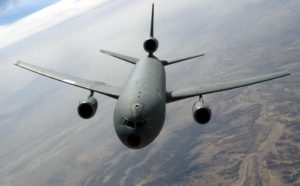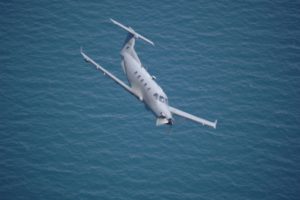Join War on the Rocks and gain access to content trusted by policymakers, military leaders, and strategic thinkers worldwide.


Editor’s Note: This is the second installment of a three-part series on new approaches to airpower called “Blurring the Lines.” Read the first article in the series here.
It’s been pointed out so often that it’s gotten boring: The Air Force has a pilot shortage. Imagine: The organization that bills itself as the premier aviation organization on the planet is short of fighter aviators, has been for some time, and will continue to be for a significant period to come.
Other officers have written extensively about the problem and how to solve it, but perhaps we’re not casting far enough afield for solutions. Indeed, as a light attack enthusiast (some would say “zealot”), I’ve long pitched the OA-X light attack aircraft as a partial solution to the pilot shortage. More aircraft means more places to put pilots, therefore more experienced pilots, therefore less of a shortage. But I, too, have been guilty of operating in a narrow lane, focused on either the pipeline to produce pilots or the force structure to incorporate them into the force. In the process, I’ve ignored a giant, parallel pilot training and absorption pipeline that produces and absorbs more pilots than the Department of Defense does. The Air Force should expand its pilot training pipeline by establishing an alternate pipeline to train military personnel assigned to civil-derived aircraft. Perhaps by blurring the lines between civil and military pilot training, the service can generate a more broadly capable force that has a wider aviation expertise.
In the first installment of “Blurring the Lines,” Jeremy Renken and I focused on the T-X and its combat variants, advocating for eliminating the divide between trainer and combat aircraft. Here, I argue that a similar breaking down of artificial barriers — in this case, the divide between military and civil aviators — could help the Air Force deal with its persistent, perilous pilot shortage.
The business of training a military pilot is expensive and takes a whole year. This timeline is effectively unchanged from World War II, although there is a proposal afoot to significantly reduce that time. Civilian pilot training is more variable. The Federal Aviation Administration allows two pathways, one with less structure but more flight time (Part 61), and another that is shorter, more formal and follows a FAA-approved syllabus (Part 141). Either way, the civil path uses aircraft that might cost $200 per hour to operate, while the military flight path is many times more costly. It’s obvious that the military path is necessary for fighters, bombers, and the heavy airlift that have no civilian analog. But what about those aircraft that do have a civil counterpart? Why couldn’t the Air Force use civil programs to train and apprentice pilots to fly those aircraft?

Figure 1: The L-4 Grasshopper (U.S. Air Force photo). The Piper Cub, which was mechanically identical to the Grasshopper, had the largest production run of any fabric-covered monoplane.
The Air Force ought to be able to, because the Defense Department does the same thing with airplanes. Today, the department flies military variants of the Boeing 707, 737, 747, and 767, the Douglas DC-9 and DC-10, Gulfstream IV, V, and 550, the Lear 35, and the Twin Otter 400. Every one of the military’s jet tankers is a converted airliner. The Beechcraft King Air is also the C-12, RC-12, and MC-12. The Pilatus PC-12 is the U-28. This trend predates the founding of the Air Force as a separate service, and the list of repurposed civil aircraft runs well past 100. And no accounting of military conversions is complete without mentioning the L-4 Grasshopper. The L-4, the military variant of the J-3 Piper Cub, served in three wars with the only differences between the two being the Cub’s yellow paint and the Grasshopper’s skylight. There is no reason the Air Force couldn’t replicate that effort, getting significant military utility out of civil aviation — and civil-trained aviators.


Figure 2: DC-10 Prototype (McDonnel Douglas) and KC-10A Extender (Staff Sgt. Cherie A. Thurlby).


Figure 3: Pilatus PC-12 (U.S. Air Force) and U-28 (U.S. Air Force).
The idea of using civil schools to train military pilots predates World War II. Until July 1939, according to the War Department, primary flight training was conducted by military instructors at Air Corps stations. That proved inadequate for the rapid expansion that began even before the United States entered the war, so the Department of the Army turned increasingly to civilian schools. By 1943, there were 56 civilian flying schools under government contract. While the civil courses took less time than the old Air Corps school, students received the same number of flying hours.
Before 1943, students in primary flight training would fly in whatever training aircraft was available. But by the middle of the war the training programs would settle on the PT-13 Stearman — a fabric-covered biplane that had no analog to any of the operational aircraft in service. As the War Department analysis notes, a total of 193,440 pilots completed Army Air Forces advanced flying schools between July 1939 and V-J day. Another 124,000 failed to complete pilot training, but most of these remained in aviation jobs, from bombadiers to mechanics. After the war, all of the aviators trained in the conflict had had significant exposure to civil aviation — a generational advantage that carried over into a fledgling independent Air Force but not much further. Airmen trained in World War II had a deep connection to civil aviation that the average Air Force aviator doesn’t acquire today.

Figure 4: A Stearman biplane in civil livery (U.S. Air Force photo).
Today, it probably isn’t desirable to use civil flying schools to train candidates for fighter attack, bomber, or heavy airlift aircraft. But what about for flying those civil aircraft? What about the MC-12, U-28, or UV-18C? The Air Force should consider expanding the pool of available pilots by looking to uniformed airmen who are inside the Air Force but who get their aviation credentials outside the military pilot training system.
The service already considers other civil skills held by Air Force personnel to be capabilities that can be drawn upon at need. Indeed, in 2004, the Defense Department established the Civilian Employment Information Program, which applies to all of the reserve components of the U.S. military as well as the Coast Guard Reserve. The program attempts to capture “civilian” skillsets held in the reserve component. It uses a broad list of professions contained in the Standard Occupational Classification Manual, which is self-limiting in that it captures only occupations, not skillsets. Thus, the category “Aircraft Pilots and Flight Engineers” has only two classifications: airline pilots and commercial pilots. There is no means for capturing critical skillsets — an Air Force weapons systems officer who is certified as an instrument flight instructor for multi-engine aircraft has a highly desirable set of skills, but the Air Force classifies her as a navigator, while the reserves pass by her civil aviation skillset entirely. The service effectively ignores an aviation skillset held by one of its airmen because it has become so stratified in its thinking that it cannot see outside its self-imposed stovepipes.
Admittedly, the Federal Aviation Administration courses do not provide the same skillset as Air Force training, but we should not pretend current Air Force pilot training covers all of the bases either. When fielding the MC-12W Liberty, a converted Beechcraft King Air, the service made the fateful decision to crew these aircraft rotationally, for short periods only, ensuring that the aircrew flying them would always be inexperienced. That mistake cost lives — after the MC-12 loss in April 2013, the accident report cited “pilot inexperience” as a causal factor. It wasn’t that the pilots were new to flying, they were simply new to the aircraft — an aircraft with a long and successful service record in civil use.
Not only does the Air Force have access to an aviation skillset that it is not using, there is also no program to train more military personnel outside the military pilot training pipeline. When I became part of the initial cadre of the Irregular Warfare Center at Nellis Air Force Base, it became clear that this new assignment would involve spending time with a rifle — training I didn’t have. But I eventually got it. The Army Asymmetric Warfare Group stood up to provide me with the same combat skills training that its own members got, even though I was starting from a lower knowledge level. If an airman can get ground combat skills as part of their military training — and many do — surely the Air Force can provide civil aviation training to its own personnel.
The service needs to look ahead to a time when it may once again need to use a range of converted civil aircraft, as was the case in World War II, Korea, and Vietnam. It might consider a Civil Reserve Airman Fleet to complement the existing Civil Reserve Air Fleet. Designed to provide a commercial reserve of airlift aircraft (and pilots) to serve military needs, the Civil Reserve Air Fleet was effectively utilized in Operation Desert Storm, moving 25 percent of the air-transported cargo and over 60 percent of the passengers. The program remains dormant, awaiting another similar need. Perhaps the Air Force should invest in a broad effort to train and retain members with civil pilot certificates, held in reserve against future need. Indeed, it may be past time to consider what civil aviation capabilities could provide for “gray area” fights, particularly in Europe, where an obvious military footprint is problematic. The option of adding civil aircraft to the Air Force need not be constrained by a lack of aviators to fly them.
It is nothing less than an institutional failure that a service founded on the premise that airmen were needed to control and manage airpower should so narrowly constrain its own processes to the point that it ignores aviation skillsets that its own members already do have or could have. The cost of military pilot training exceeds a million dollars, while the cost of Federal Aviation Administration-certified programs runs in the thousands — and they are shorter to boot. There may come a time when the Air Force need to rapidly expand its aviation capabilities, particularly when facing emerging Russian and Chinese threats. By blurring the lines between civil and military flight training, the Air Force could take advantage of latent capabilities in a brutal financial environment where new capabilities are in short supply.
Col. Mike “Starbaby” Pietrucha was an instructor electronic warfare officer in the F-4G Wild Weasel and the F-15E Strike Eagle, amassing 156 combat missions over 10 combat deployments. As an irregular warfare operations officer, Col. Pietrucha has two additional combat deployments in the company of U.S. Army infantry, combat engineer, and military police units in Iraq and Afghanistan. He is currently assigned to Air Combat Command and is qualified in the AT-6C Wolverine. The views expressed are those of the author and do not necessarily reflect the official policy or position of the Department of the Air Force or the U.S. Government.
